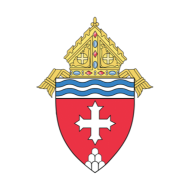Who’s responsible for the USCCB’s Twitter?
Baltimore, Md. (CNA) – Over the course of the US Conference of Catholic Bishops spring general assembly, questions arose online: what was going on with the suddenly-chatty USCCB Twitter account? Did they give an intern, or perhaps a particularly hip young priest or enthusiastic new convert the password? Had the account been hacked?
As it turns out, none of those were true. The account is run by Connie Poulos, a 31-year-old content and marketing coordinator at the USCCB. Sheís not an intern ñ and has worked for the conference since 2017, originally as a digital media specialist ñ and sheís not a convert, and sheís definitely not a priest. Sheís married, and she and her husband are in the process of adopting a son from China.
Poulos sat down with CNA during this week’s general assembly to discuss what prompted the USCCBís new online persona. Apparently, this strategy was part of a larger plan to attempt to present a more humanizing look at the bishops of the conference, and better to engage with the accountís 156,000 Twitter followers.
When I first started in 2017, we didnít engage on this level, but we did engage,î she explained. ìThen, McCarrick happened.
After the actions of the now-laicized former Archbishop of Washington came to light, Poulos said the conference decided to take a step back when it came to their online presence. About a year later, that mentality has shifted, even as a new crop of scandals begin to emerge.
“We just kind of decided, ‘look, all bets are off. We’re just gonna be us, we’re going to use this account to engage,íî said Poulos. She said that she received instructions to ìbe boldî on the internet. †
“Then I took that and ran with it,î she added, beginning with her tweets at the spring general assembly.
As a way to expand upon what was being discussed at the general assembly, the USCCB tweeted a picture of Bishop Robert Barron of Los Angeles with the caption ìIf you are a young Catholic who is still Catholic, what has made you stay?î At the time of the tweet, Barron was speaking about how half of all young people who leave the Catholic Church become religiously unaffiliated.
The tweet received thousands of replies, including one from Dr. Taylor Patrick OíNeill, a professor of theology at Mount Mercy University. OíNeill tweeted, ìNot sure if I am young anymore, but when I was young, the thing that made me stay (or rather return), was finding out that there was a rich intellectual and spiritual REASON (or Logos) behind the felt banners and superficial platitudes which initially pushed me away.î
Then, Poulos, on the USCCB account, responded to this tweet with ìBeautifully said. I’m Ö not sure anyone likes the felt banners.î
Beautifully said.
I’m… not sure anyone likes the felt banners.
@US Catholic Bishops (@USCCB) June 11, 2019
This tweet blew up, so to speak, and was liked over 700 times. After that tweet, people began to take notice of Poulosí new approach to the account and started to interact more with the USCCBs Twitter presence.
For what itís worth, Poulos insists sheís ìambivalentî on the topic of felt banners.
“If you look at the actual wording of the tweet, I was carefully non-committal,î she said. ìI was like ‘I’m not sure anybody likes them.’ It wasn’t a statement,î she said, laughing. She did, however, appreciate the jokes people made, such as one saying ìanathema felt!î and others who said the USCCB has spoken out against felt banners.
As a self-described true millennial working for the USCCB, Poulos said she is aware of how the organization is viewed by others her age. By engaging on social media with other Twitter users, Poulos said she is trying to be ìaccessibleî and ìtake away some of the mysteryî of the conference of bishops. She said the reaction to her tweets have been ìoverwhelmingly positive,î even if some of her older coworkers were initially concerned someone unauthorized had accessed the account.
Poulos said her supervisors at the USCCB were entirely supportive of this new approach to engagement on social media, although some other USCCB workers were not so sure about it in the beginning.
“I think they were encouraged when they saw the positive reaction,” said. She hopes that she will be able to keep up the engagement on the USCCB social media accounts after the general assembly concludes. †
For Poulos, this approach to online engagement is a fulfillment of the vision she first had when she started working at the USCCB in 2017.
To put a human face on the bishops is important, I think, and to be a presence (online), she said. Just as they say Christ has no hands, but yours, Christ has no Twitter account, but yours.
“This is where people are, we need to meet them there.”

